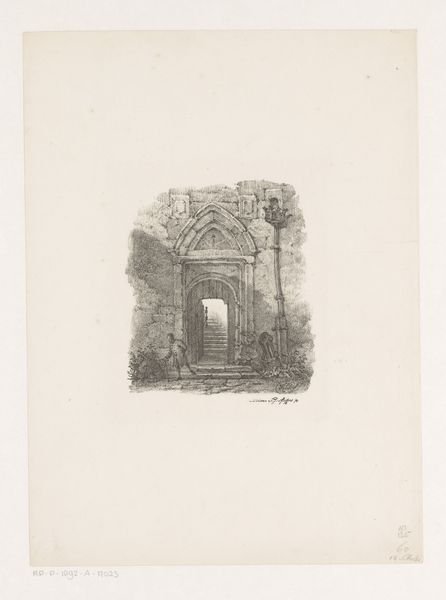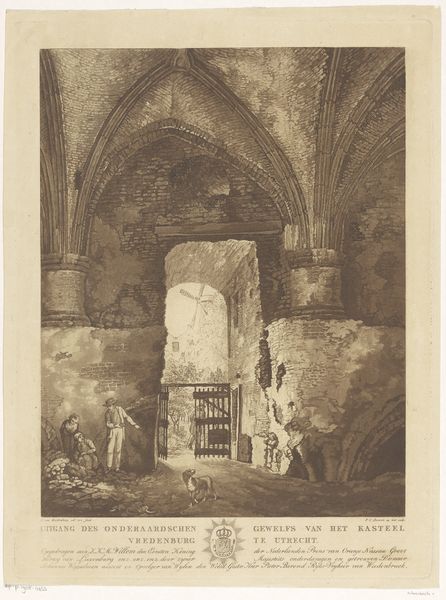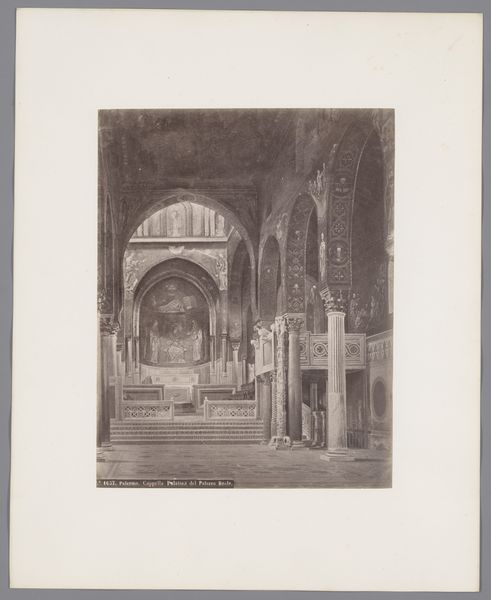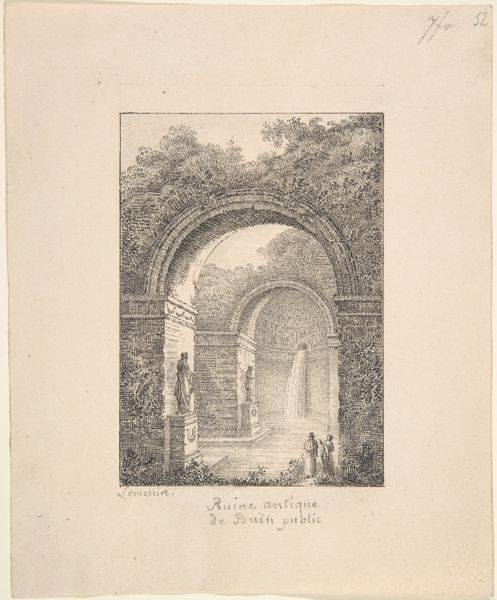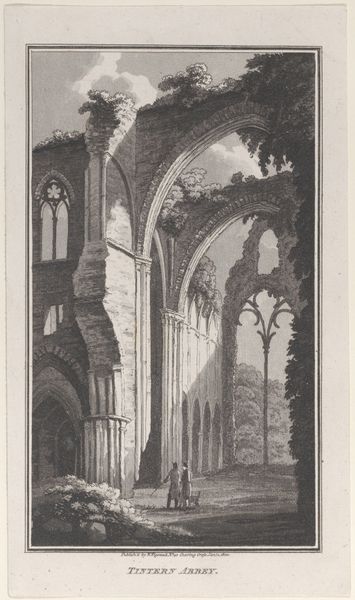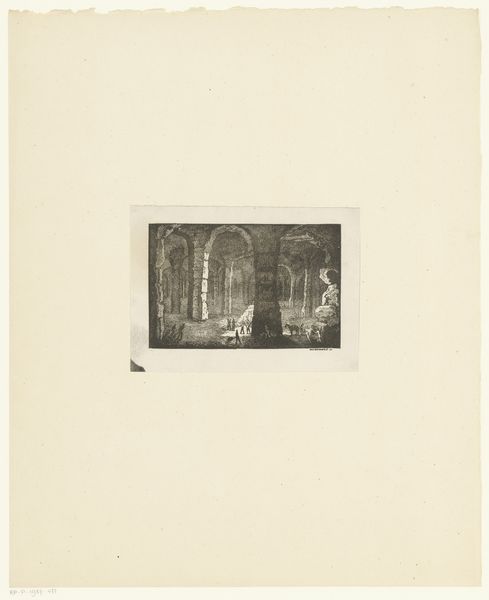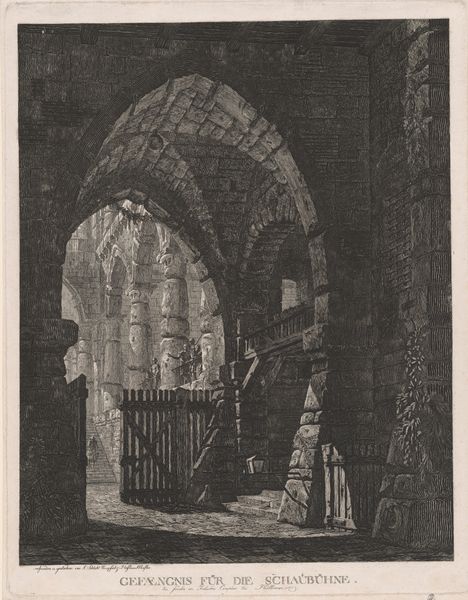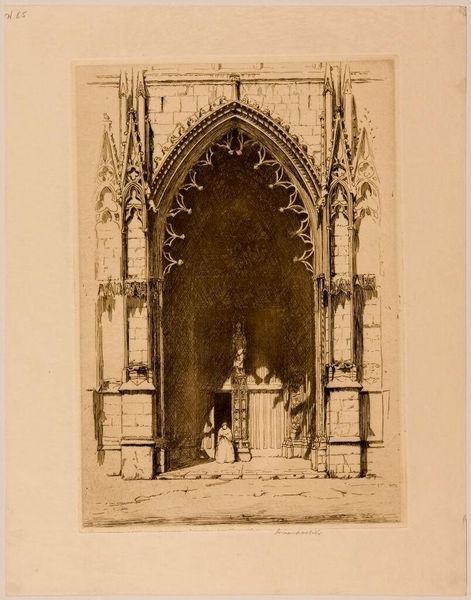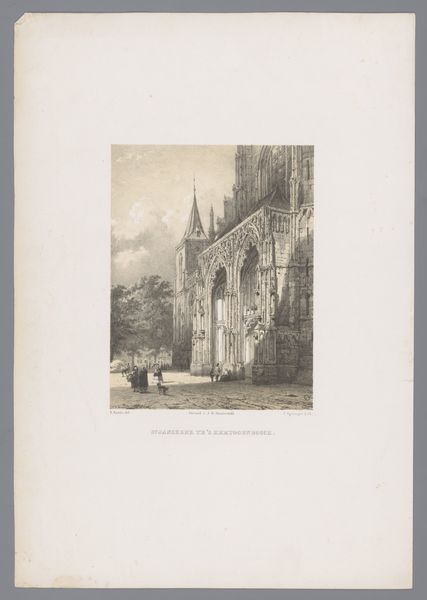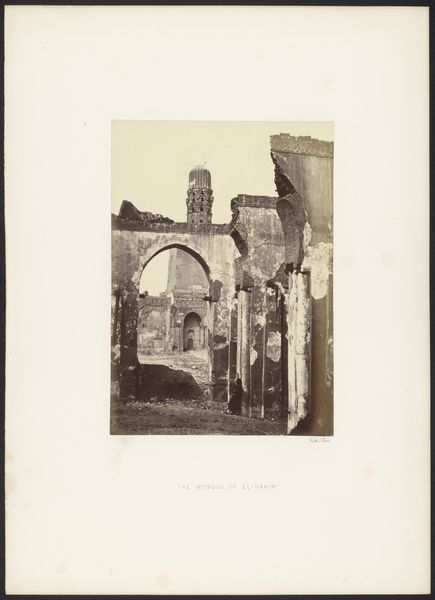
print, engraving, architecture
# print
#
asian-art
#
landscape
#
ancient-mediterranean
#
engraving
#
architecture
Dimensions: height 365 mm, width 275 mm
Copyright: Rijks Museum: Open Domain
Editor: This print, “Ruïne van Borobudur” by Adrianus Johannes Bik, likely created sometime between 1809 and 1872, captures a ruined gateway. I am really struck by how much the artist highlights its grandeur even in decay. What can you tell me about its social or cultural context? Curator: This work offers us a lens into the complex power dynamics inherent in the colonial gaze. Here we see a ruin, an artifact of a rich cultural past viewed through the lens of European artistic interpretation. Consider the implications of documenting and representing the culture of colonized lands through art. Editor: So it’s not just a landscape; it’s a depiction loaded with colonial perspective? Curator: Precisely. Bik was Dutch and Borobudur is in Java, now Indonesia, a former Dutch colony. How might the act of recording and displaying these ruins in Europe have served the colonizer's narrative? Think about whose story is being told and for whose consumption. Is it a celebration of Asian art, or an assertion of Western dominance through the act of observation and documentation? Editor: That frames it so differently! The crumbling structure no longer feels romantic. Now I’m thinking about power, control, and the imposition of cultural values. It becomes a symbol of a lost cultural heritage. Curator: It becomes imperative for us to understand this print in a contemporary sociopolitical context by engaging with the voices, histories, and struggles of those who've been historically marginalized by the Western gaze. Editor: That makes me reconsider my initial reaction, and how I interpreted what I saw in this work. Thank you, that was very insightful. Curator: And thank you! That's why diverse perspectives are so vital when studying any artwork.
Comments
No comments
Be the first to comment and join the conversation on the ultimate creative platform.
